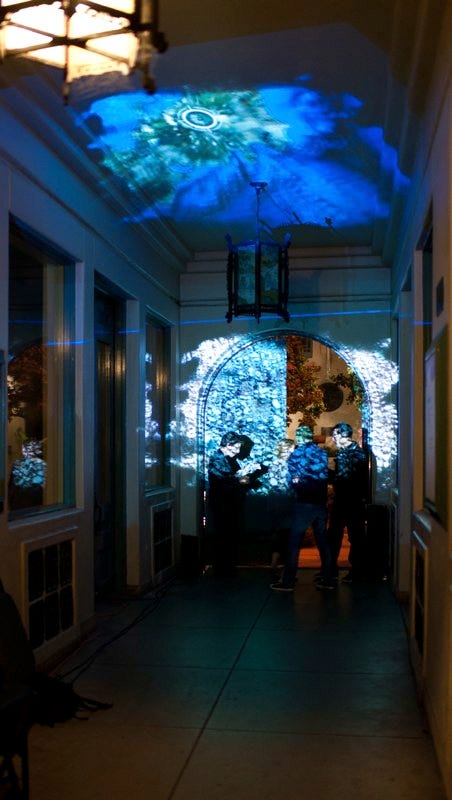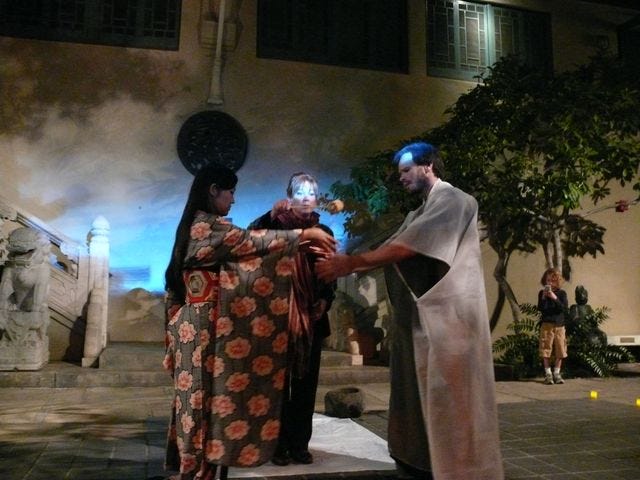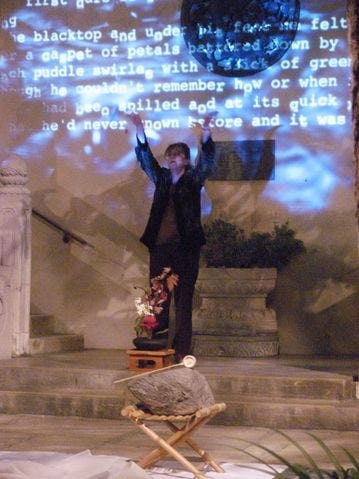Thank you to so many readers who have reached out with positive feedback about Work In Progress. After six weeks, there are more than 225 of you reading this column every week. Of those readers 89 are now free subscribers and a precious few have supported my efforts with a paid subscription. Thanks to ALL of you!
Several readers have encouraged me to share more about my creative practice. Others have asked me to share excerpts from my memoir. Still more are encouraged by my posts which examine current affairs through the lens of Art. I am very inspired and motivated by your positive feedback, so I am tackling all three in this post. Please feel free to skip to the section that’s most important to you.
Creative practices:
Below you’ll find an incomplete list of Creative Practices that I utilize when I am working on projects. In my first Work in Progress entries, “Writing Out Loud” and “How to Start”, I deal with How I Begin a project. Of course there’s much more to say about beginnings, but I want to move on to the next item on my list: Creative Briefs
Creative Practices
How I begin
Creative Briefs
Devising
Chance and Choice
Three Spirals Diagram
Fascinations
Wondering and Wandering
Posing Questions
Notes and Lists
Journaling
Character Biographies
A, B, & C Outlines
Deadlines
Collaboration
Tech
Previews
Time Bending
The Downward Spiral of Doubt and Despair
Opening Night
The Creative Hangover
Comparison is Destruction
Post MorteumWhenever I work on a new project, I inevitably write a creative brief. It’s not always the first thing that I do, because I find that nailing down the particulars too early in the process can hem in my creativity. However, articulating what I envision, what inspires me, and what elements I plan to bring together focuses the work-in-progress.
If I am invited to pitch a new project, I always write a creative brief to prepare. (BTW--book proposals and screenplay treatments are also creative briefs) I also write a creative brief before I go into rehearsals to share with the designers and the actors. Inevitably, every creative brief transforms as the project develops.
Here’s a creative brief that I wrote on New Year’s Day 2025 about this Substack project.
My objective in writing Work in Progress is to discover meaningful connections between art and life. As someone who has trained and worked professionally in the arts for 40 years, my outlook has been shaped profoundly by diverse and fascinating practices of the performing, literary and visual arts. I hope that sharing the practice of various artforms as well as my life in art can positively impact how my readers approach their own creativity and life.
Here’s another example of a creative brief written when I was commissioned by Pasadena’s AxS Festival. This work premiered in 2011.
Rain After Ash A devised work inspired by the poetry and life of Craig Arnold Created by Corey Madden and Company Music/Sound by Bruno Louchouarn Projections: TBD Actors: 2 women, 1 man Duration: 60 minutes Venue: Pacific Asia Museum Summary: This 3-character, 60-minute devised work uses the Greek myth of Persephone and Demeter as the frame for a dramatic exploration of the poetry, life and tragic death of Craig Arnold—a talented, but troubled artist who went missing in May 2009 while hiking on the volcanic island, Kuchinoerabujima, off the coast of Japan. Rain After Ash also examines the social phenomena of the internet, which allows all of us to venture into digital underworlds where we can chase after perfect strangers. My fascination with Craig Arnold was piqued by seeing the headline “Poet Missing off Coast of Japan” in the online edition of the NY Times. Immediately I set off on a digital journey to find Craig Arnold, first locating his Facebook page where friends posted encouraging messages for 9 days until the search was called off. I also found Volcano Pilgrim, Arnold’s daily blog written for his poetry fellowship in Japan. On KCED I found Craig’s last recording of the poem"Hymn to Persephone" that will make up much of the text of Rain After Ash. Listening to it, I understood that Arnold was compelled by the dark portents of Greek myth. Soon after I began to envision a devised work that explored the mystery of Arnold’s poetic journeying and his tragic death. Staging: The work will be staged as a museum tour starting in the entry way of the Pacific Asia Museum and proceeding through 4 galleries and ultimately concluding in the garden. The audience will experience the play as they are guided by the characters of Demeter, Craig and Persephone through the galleries. Their experience, while roughly following Arnold’s journey across Japan and his disappearance, will feel more like a dream as the audience engages with his poetry, and soaks up the projections, sound, music and artifacts in each gallery. Audience: Capacity is dependent on the size of the smallest gallery. I estimate we can handle about 20-25 for each showing. Seating: Most audience members will walk and stand throughout the show. However, there should be easily moveable stools for those who need it Special tech needs: Projections will be used in each gallery along with lowered gallery lighting. Headsets will also be used for audiences to hear an ongoing music/sound score.
Rain After Ash: Entry way projection during tech rehearsals
Rain After Ash: Final Ceremony: Persephone, Craig and Demeter
Rain After Ash: Demeter, Final Image
A creative brief is an early and critical act of imagination, a self-directed assignment that begins to give shape to a project. Specifications such as the duration, cast size, venue and key design elements set helpful guardrails and stimulate the entire collaborative team’s creative inquiry. Regardless of arts discipline and also if you want to start a home renovation, a new business or plan a dream vacation, writing a creative brief, especially in collaboration with your loved ones, will focus and align your vision, and elevate your capacity to move from concept to realization.
Memoir in Progress
Destiny has always played a leading role in my life. According to family legend this is because I was born under an auspicious star. The bearer of this exciting news was Helen Van Nasso, my mother’s “eccentric” second cousin, who rushed from Newark to Montclair to meet the 4th child and only daughter of Joan and Carl Madden—Corey Beth Madden--on the morning I was born. Standing over my bassinet Helen predicted, according to the Newark News, that I was destined to be a great artist: an opera star or at the very least, an actress. She blessed me with a kiss on my tiny forehead, then promptly left me to wrestle with my newborn fate.
I can personally attest to the powerful effect of Helen’s prophecy, which was repeated enthusiastically and often enough to ignite my fervent belief in it. There was also the inspiration of two female cousins who were devoted classical musicians and three older brothers who sang and/or played along to everything from Burl Ives to Muddy Waters. So quite naturally, at the ripe old age of three, I learned every song from the My Fair Lady album and regularly performed my repertoire before adoring home audiences.
Even though the top priority for all Madden children was academics, my parents did not ignore my artistic inclinations. My father, a gifted tenor, encouraged me from a young age to study voice, but was sternly opposed to my attraction to musical theatre. As a compromise, my mother steered me into ballet. Even at age five I was taller, bigger and bolder than most baby-ballerinas, so after a year of twirling, I turned in my tutu. Next, my mother encouraged me to try piano and subsequently drawing, but I discovered these were lonely occupations and I was already a lonely child, whose three older, adored brothers had left home for prep school or college.
In the second half of elementary school, I became a voracious reader, however no one in the family considered I might become a writer. In fact, the thought never crossed my mind until mid-way through college. In seventh grade I took up the flute and joined the school band, but I found myself stuck in 9thchair. Demoralized, I finally decided to go against my father’s wishes taking my chances on the loud, brash and wicked stage.
My theatre “career” began that Spring when I was cast in the chorus of Oliver. When the curtain rose on my first performance in the lunchroom-turned-auditorium of Oliver Wendell Holmes Middle School, I was overcome to see all my school mates raptly watching the outcast drama kids singing our hearts out. Curiously, I had no illusion that our performance was good, rather at that moment I could sense the overwhelming power of storytelling and the stage. And somewhere deep in my heart, I recognized this communal art form was where I belonged.
That summer my mother, who was by then working full-time at the Smithsonian, enrolled me in drama camp. Along with about a dozen other pre-teens, our ensemble staged Story Theatre, an off-Broadway hit created by Paul Sands. We began performing this slight but entertaining adaptation of American folk tales at libraries and parks, and to our surprise and delight were a hit. As Summer ended we were invited to perform at a folklife festival held on the grounds of the brand new Wolf Trap National Park for the Performing Arts.
Unless something goes seriously awry, there’s a moment in every kid’s life when they begin to take themselves seriously. Performing at Wolf Trap was that moment for me. There on the spreading lawn outside the performance pavilion under dozens of canvas tents I saw hundreds of young people and old folks each pursuing their passion, whether it was playing fiddle or whittling toys. Surrounded by all that creativity, I knew that doing what I loved would carry me forward in life.
Spending all your free time on and off stage ensures that you will be exposed to a lot of drama. Entering high school, I quickly got entangled with the drama kids, for whom spreading gossip and sniping at each other was the norm. I wasn’t comfortable in that social scene, still it must be reported that my attachment to acting soared when I was cast as Mary Warren in Arthur Miller’s The Crucible” and got to shriek, “Lord, save me!” at the top of my lungs. Having grown up in a family that that had a puritanically firm stance against yelling, the emotional release was like a drug mainlined into my teenaged heart.
In the spring of sophomore year, our drama teacher organized a theatre trip to New York City for our Thespian Club. A early highlight of the trip was making out with the hunk who played Danny Zuko in our school production of Grease, while riding the bus north on Interstate 95. Our group arrived at a seedy hotel a few avenues west of the Broadway theatre district, at which time we were assigned to sleep four girls to a double room. We dressed in our teenage-finest, had dinner somewhere cheap and fast, then walked as a group through Times Square, that awesome canyon of flashing neon, to the Imperial Theatre where I nearly orgasmed watching Ben Vereen strut across the stage in Pippin.
The next night our gang attended a performance created by avant-garde director Richard Schechner in a cavernous downtown venue called the Performing Garage. Along with a couple other kids we climbed up a tall scaffolding and sat on planks with our legs dangling over to watch the performance below. What transpired was an incomprehensible and shocking event, that none-the-less altered my creative consciousness forever.
The summer before junior year I attended the Virginia Governor’s School, where I stayed on the campus of Mary Washington College for four weeks, and took acting, modern dance, and fencing classes. As was the goal of the program, I got to be friends with an assortment of talented kids from across the state all of whom were planning on studying their chosen art form in college. From a lithe and dark haired dancer I heard about a school in North Carolina where you could study music, dance or acting as a high school student. When I came home I announced to both my parents that I planned to apply. Kicking my dream to the curb my father warned that most actresses ended up as prostitutes. “Katherine Hepburn was no prostitute!” I declared, and saw my mother’s eyes darting toward me before she returned to her knitting with a wry smile on her face.
That winter my great expectations grew when I won the hand-painted Thespian award for playing Amanda Wingfield in The Glass Menagerie. Against my father’s ongoing objections, I auditioned for the North Carolina School of the Arts with Tatiana’s speech from Midsummer Night’s Dream, “These are the forgeries of jealousy” which I’d worked on for weeks with my drama teacher. To my utter amazement and delight I was accepted for my senior year of high school. Throughout the spring of junior year, I became unbearable, proudly telling anyone and everyone that I would not be stuck at Thomas Jefferson High any longer because I was going to a conservatory to study acting. Then, in a truly dramatic reversal of fortune, I received a letter from the new Dean of the Drama School announcing that the high school program had been eliminated. If I wanted to enroll, I would have to graduate from high school and enter as a college freshman. (To be continued)
Current Affairs: How Reading, Writing, and Acting Helps
Despite continuing bad news from Washington, I’ve found a more secure footing regarding the new regime. Here’s what’s helping me.
Reading
I’m heartened by reading about leaders who are stepping up and speaking out. These brave folks are rallying the Nation to push back against the illegal and reckless actions of the Mad King.
I am choosing carefully WHEN to read Facebook, Bluesky, Substack or listen to NPR. I do not watch TV or cable news.
If you are not already reading historian Heather Cox Richardson’s Letters to an American, I strongly recommend that you join the millions who benefit from her daily summaries and analysis.
If you simply need a respite, find the creators on Substack who post photos, art, poetry and amazing visualizations of math. A personal favorite is Francesco Turrisi, a talented musician in the Silk Road Ensemble and a passionate cook. He shares his perspectives on music and food on Cooking by Ear.
Writing
My purpose in posting weekly on Substack is to warm up my writing skills, to test topics and material, and to reach and, hopefully, touch readers. I’ve discovered that reflecting on the crisis through writing has shifted my mindset. It’s calmed me down and provided with me with hope. As I discovered when facing Bruno’s illness, my writing practice allows me to shift perspective and find my inner strength.
Here’s a poem I wrote that became the prologue to Numbered Days.
To be an artist Is to seek refuge In the imaginary To conjure it and shape it So that it expresses The ineffable The confounding The unimaginable For artists The question of belief Is answered By the persistence Of our imagination This is the way We seek God.
Acting
Personally, I find that taking action is the best antidote to whatever ails me. I focus on doing small and manageable tasks that are within my capacity to start and complete in a single day. Right now, I am writing letters, attending local protests, participating in boycotts, and donating modest sums of money.
In conclusion
If you’ve read the entire entry, thank you—and if possible will you please leave me a message that you did! Here’s hoping every reader found something they liked from my smorgasbord of writing this week.
Always looking forward,
Corey







Read it. To the end. I enjoyed the personal history - looking forward to hearing about those college days. More please!
Re: your most recent Substack.
I was there. I will never forget it. Your delivery of the line “Lord save me!” was THE moment when I knew you were destined for greatness. I say this in all seriousness; I remember the moment clear as a bell.